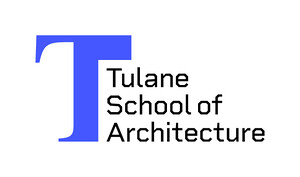November 1–2, 2024
Richardson Memorial Hall, 6823 St. Charles Ave.
New Orleans, LA 70118-5698
USA
T +1 504 865 5389
F +1 504 862 8798
architecture@tulane.edu
The Gulf Coast: Desired Climate Futures Symposium is a two-day symposium at Tulane University, organized by the School of Architecture, in collaboration with the School of Science and Engineering and with financial support from the Gulf Futures Program, led by the National Academies of Sciences Engineering and Medicine (NASEM) Gulf Research Program.
The symposium aims to discuss visions and tools to advance climate strategies and inform a new way of inhabiting the territory. As we confront the pressing issues of extractivism and ecological degradation, this symposium will foster vital conversations on rethinking our relationship with nature and developing adaptive strategies for a more equitable and regenerative future. Its structure includes panel presentations and discussions with experts and scholars from across the U.S. and the globe, welcoming the public at large to join the conversation.
This symposium occurs at Tulane University in the context of three new initiatives for the Gulf Coast Region: Research Studios at Tulane School of Architecture (TuSA), funded by the NASEM Gulf Research Program; the new interdisciplinary dual degree Master of Landscape Architecture and Engineering (MLA-MS RCSE), taught across Tulane School of Architecture and Tulane School of Science and Engineering; and the launch of the Center on Climate Change and Urbanism at TuSA.
The symposium schedule, speakers and other event details can be found here.
Symposium overview
In the Gulf Coast region, we are often told that reforms proposed by climate strategies are impossible and even undesirable. At local and regional levels, we are constantly reminded that our economic wealth and lifestyle depend on, what we could critically call, the extractive rationale. This paralyzing mantra is rooted in a hegemonic cultural view sustained by specific ubiquitous values, where progress is tightly related to industrial material growth. In these challenging moments, we should aim to frame the problem from a new lens. New cultural perspectives, the reevaluation of historical knowledge, and multidisciplinary insights guide us toward a different set of values.
In After Nature, scholar Jedediah Purdy explains how the United States has historically sustained four predominant visions of Nature, what he calls “environmental imagination”. Law, economy, and cultural narratives are conceived through these visions and coexist as a palimpsest that imprints the core ideas behind our most recent “Ecological” view. The symposium addresses this topic as its starting point. During Panel I: On Visions, we will examine these legacies, how to move past them, and what new values could reform the built environment.
The Gulf Coast’s socioecological crisis reflects centuries of extractivist deterioration and loosely regulated industrial activity, making this area one of the global epicenters of climate change effects. To respond to this reality, a new paradigmatic shift is needed. As Kate Raworth discusses in her book Doughnut Economics: “Today’s economy is divisive and degenerative by default. Tomorrow’s economy must be distributive and regenerative by design”.
This aspirational paradigm is more radical than our current shift from “degenerative” to “non-harmful”. Many needed actions are in this realm, ranging from “climate adaptation” to respond to sea level rise and “climate mitigation” to halt global warming. The benefits of these strategies are already well known, and imprinting them in the built environment could help transition to a non-harmful way of living.
However, a more ambitious shift is needed to transition from “non-harmful” to “regenerative”. This paradigmatic change requires a new set of tools to participate in the biosphere’s restoration and preservation. What could this mean for the built environment? This shift is what we aim to discover and what the second part of the symposium will discuss through the topic of tools. Panel II will address interdisciplinary tools by “thinking with”, where other agents such as more-than-human (trees) and bodies of water will be included. Panel III deals with modes of inhabitation from the local to the regional, discussing what tools are needed for a regenerative scenario planning that could help redesign the new worlds to come.






